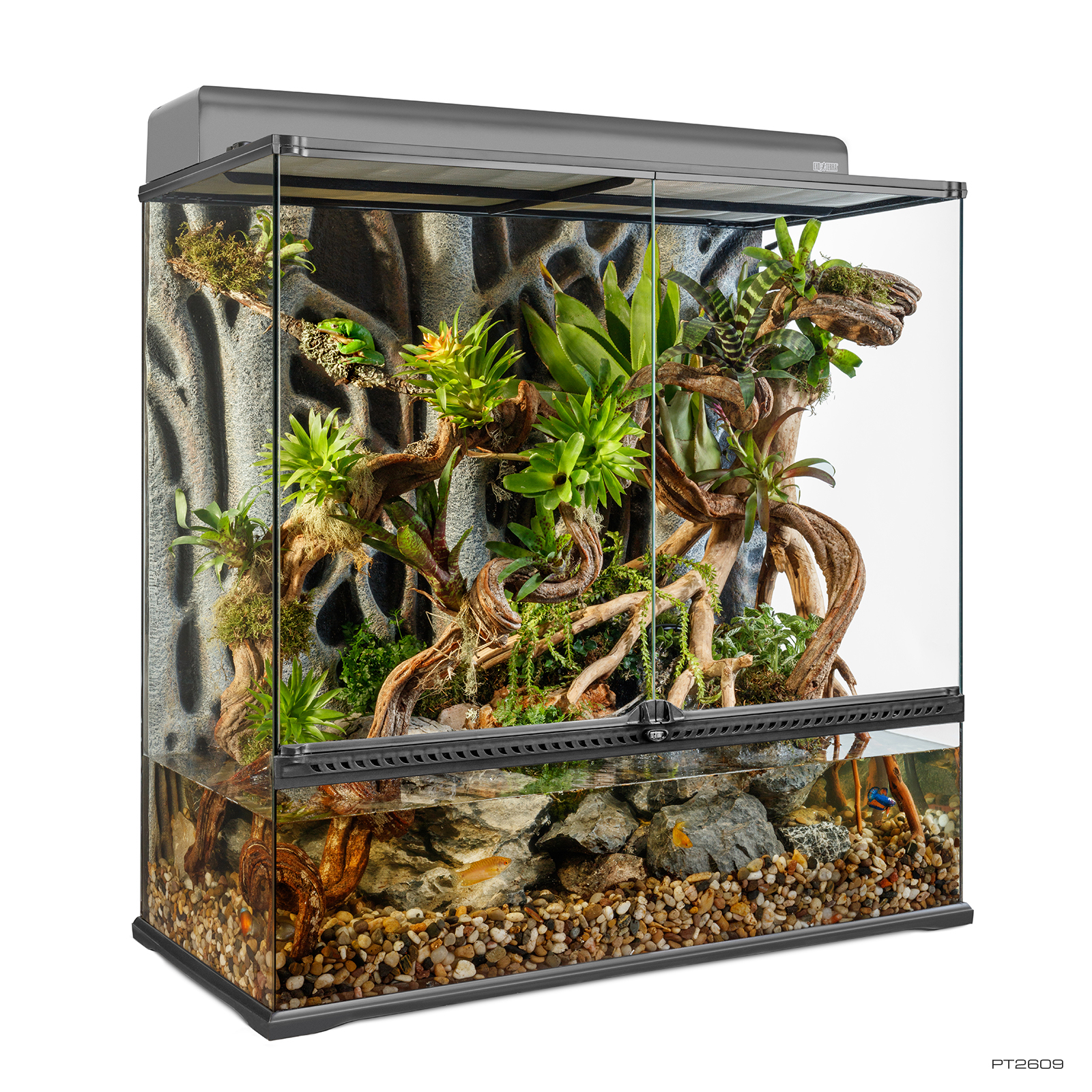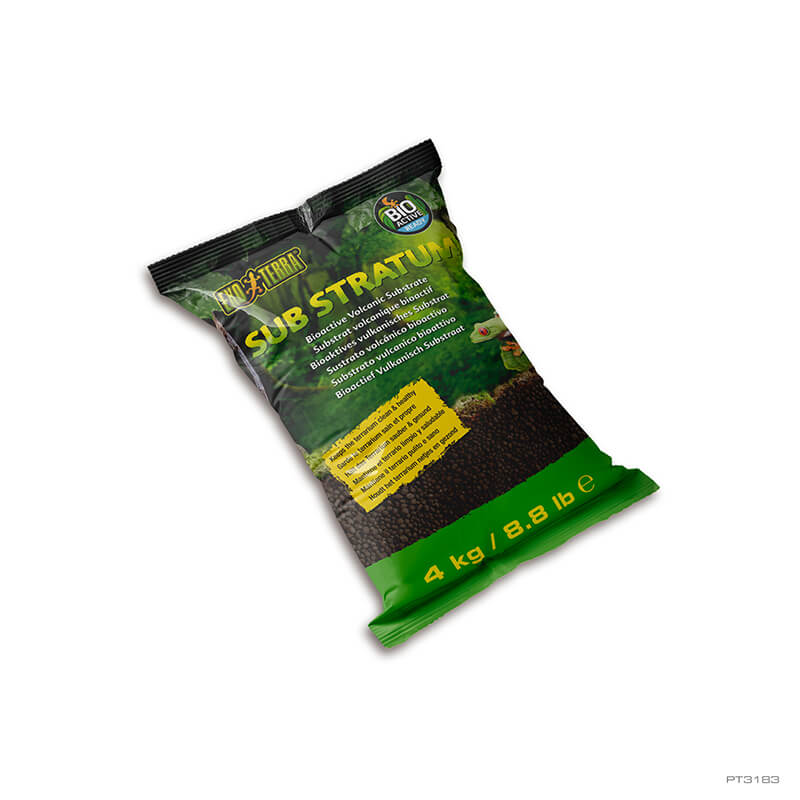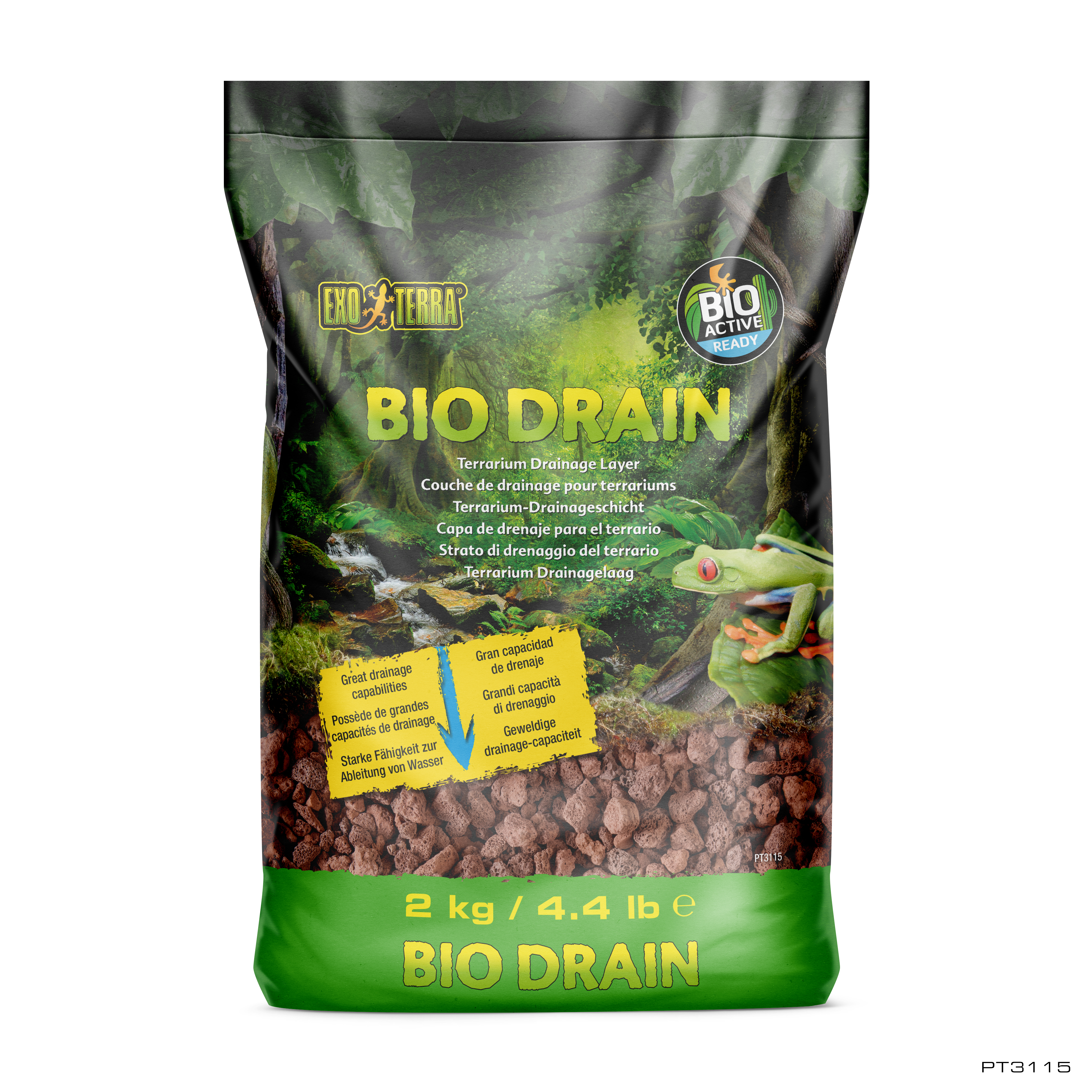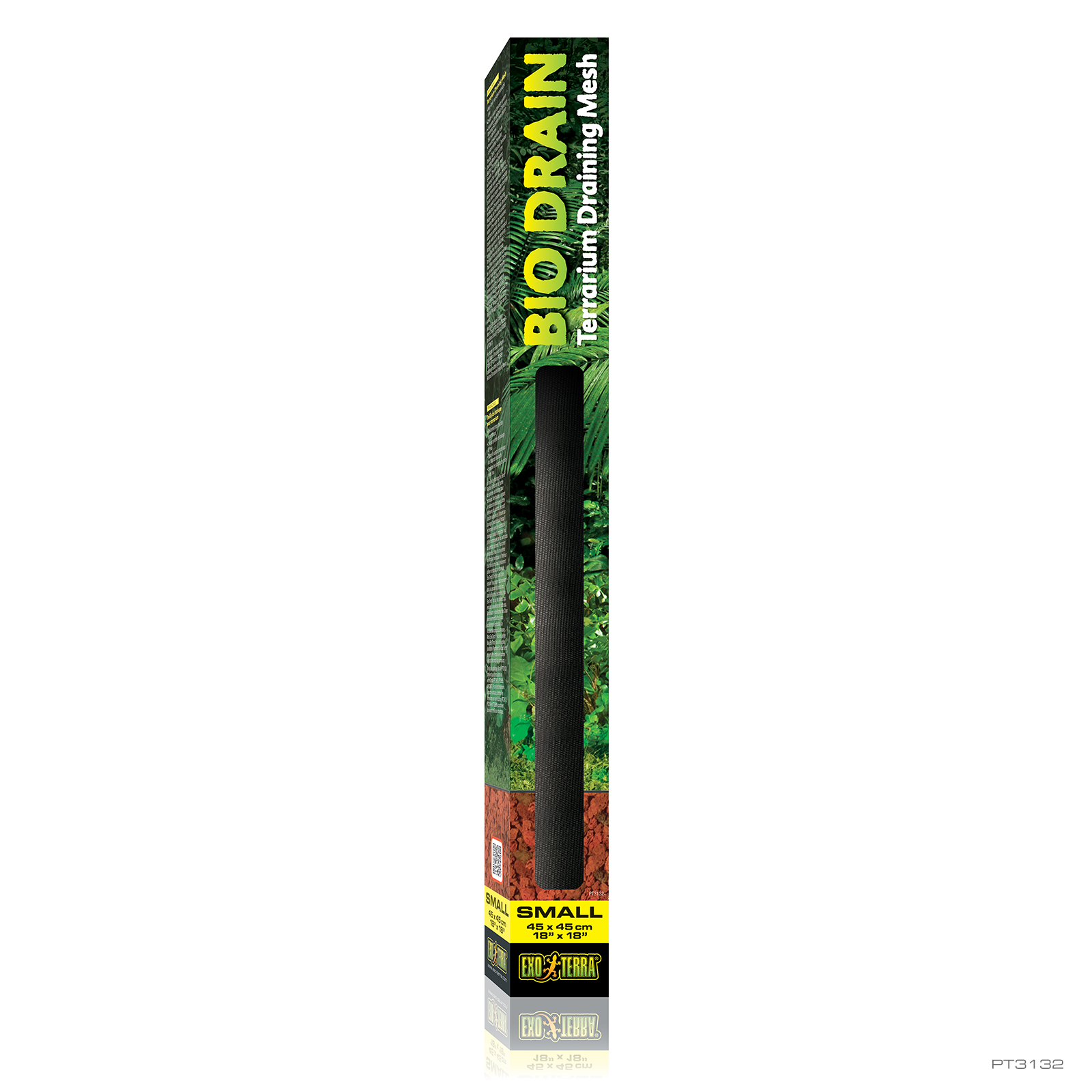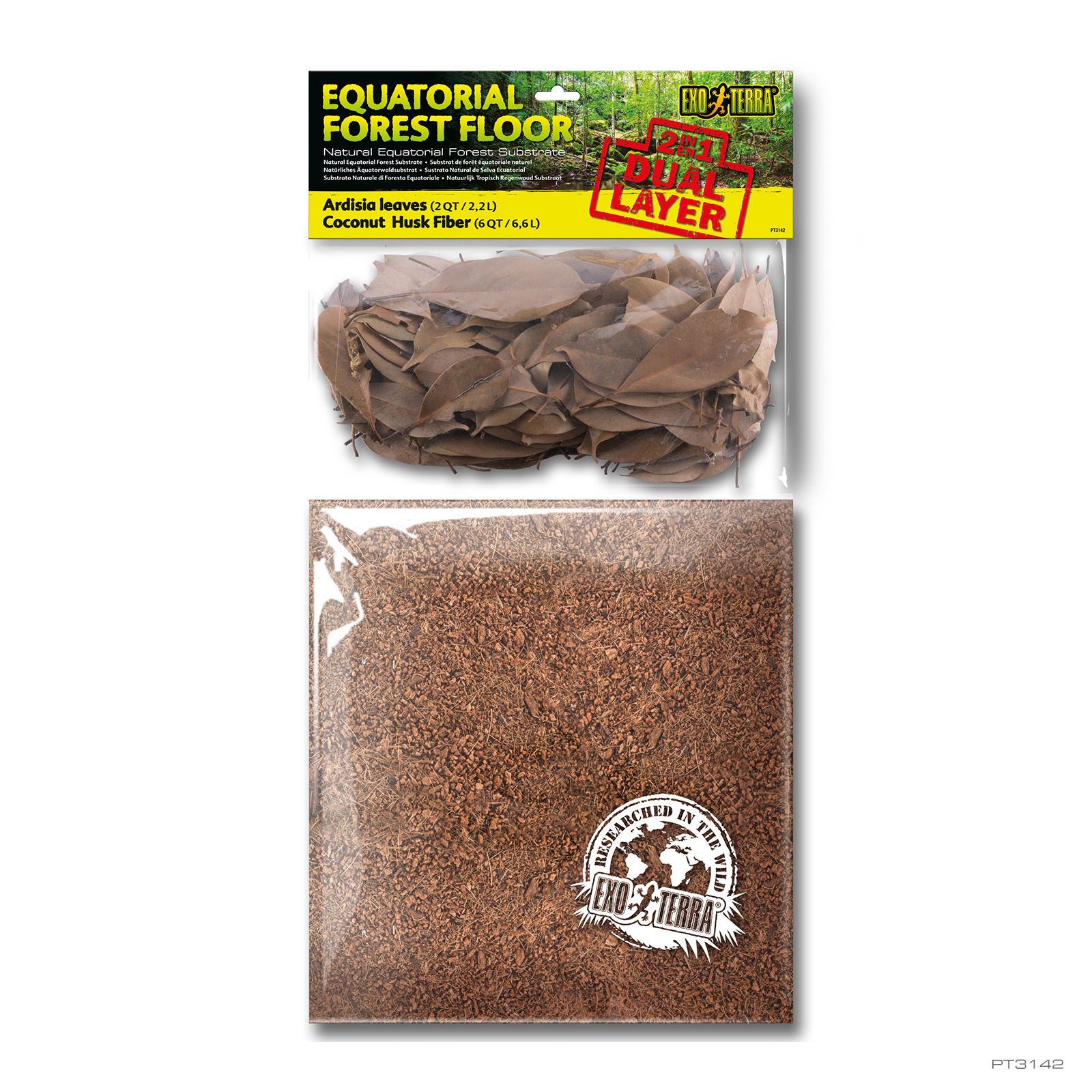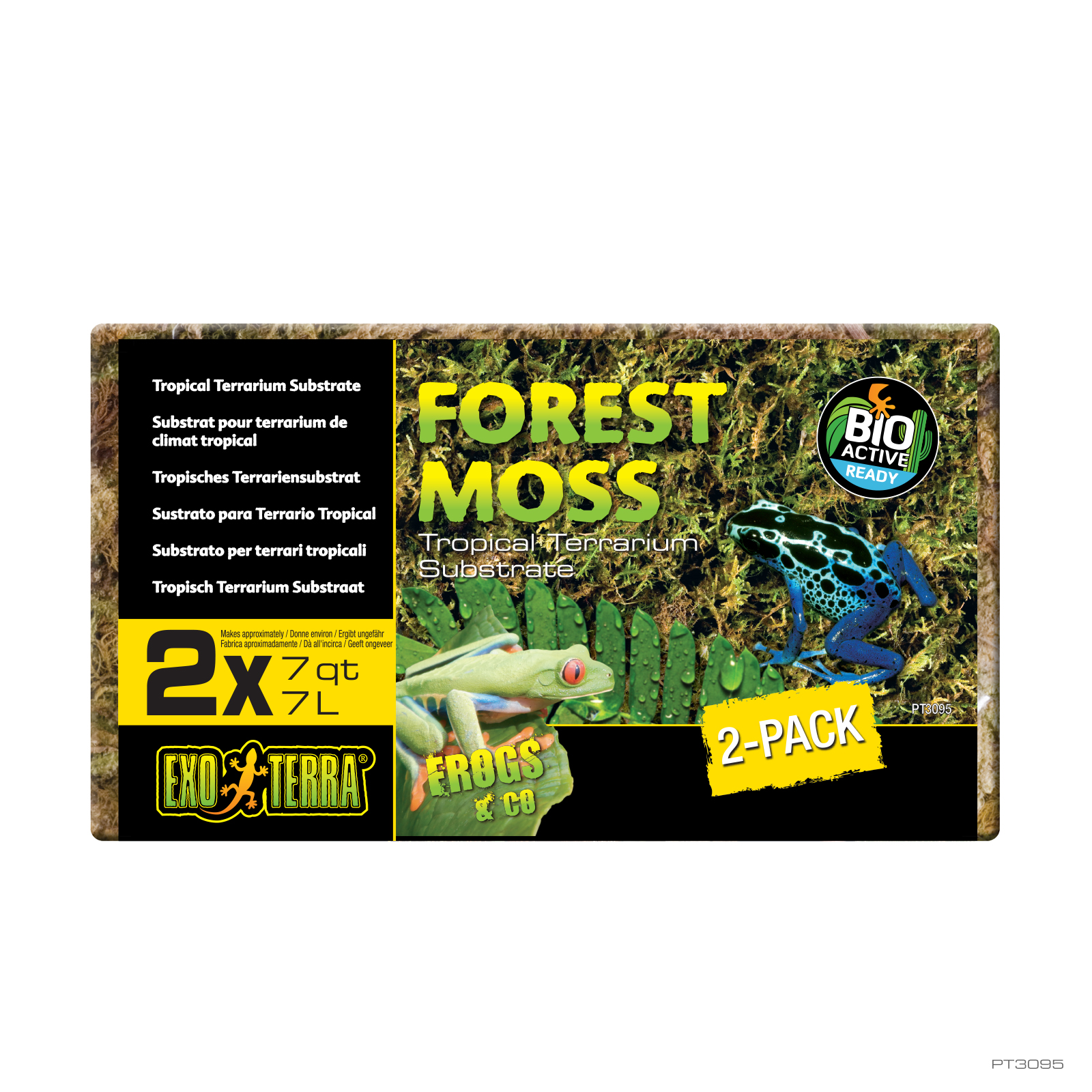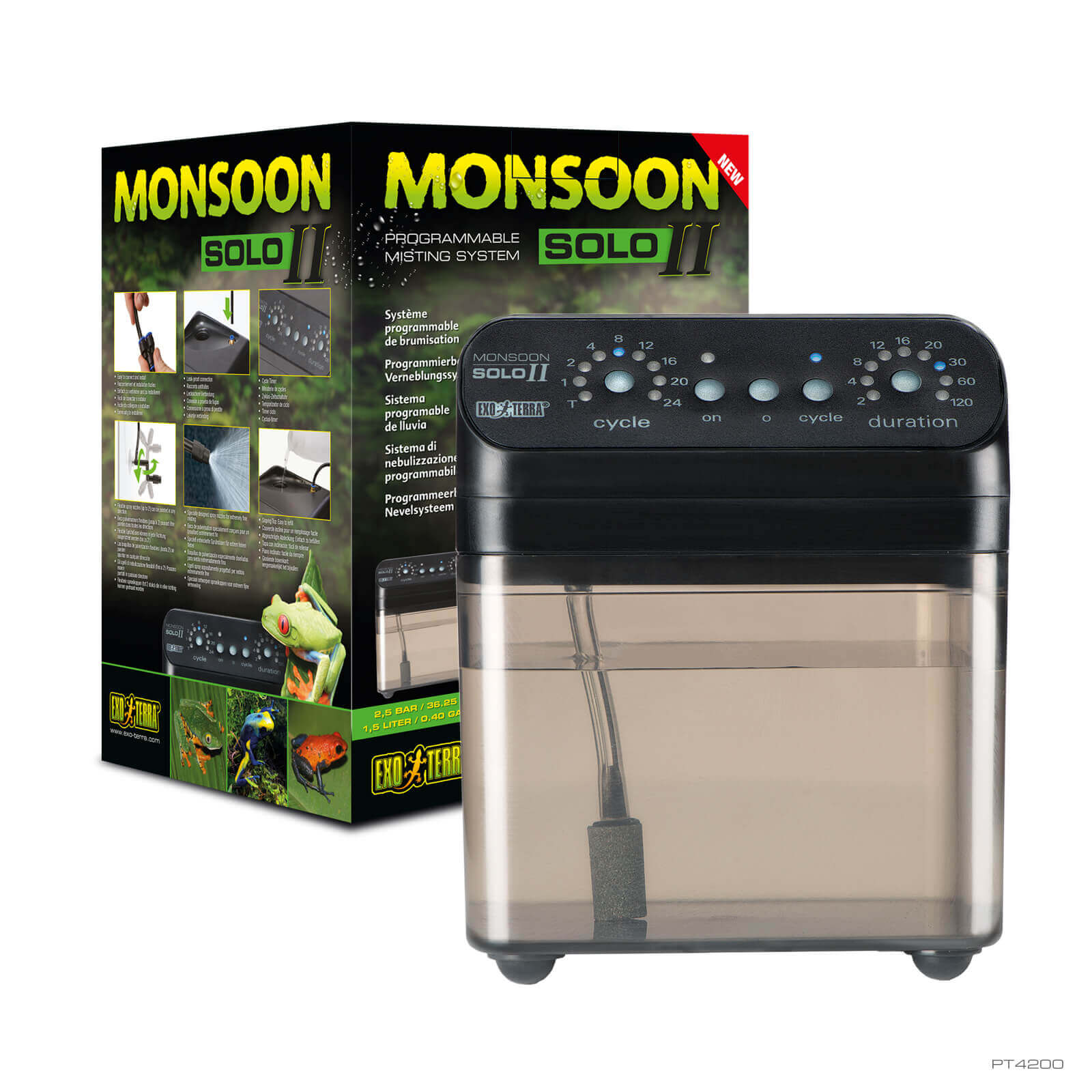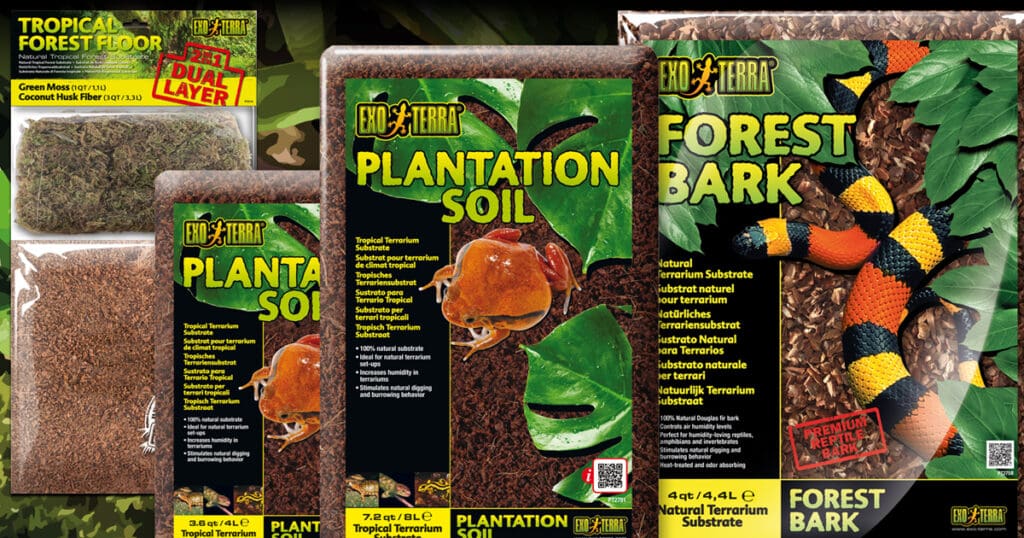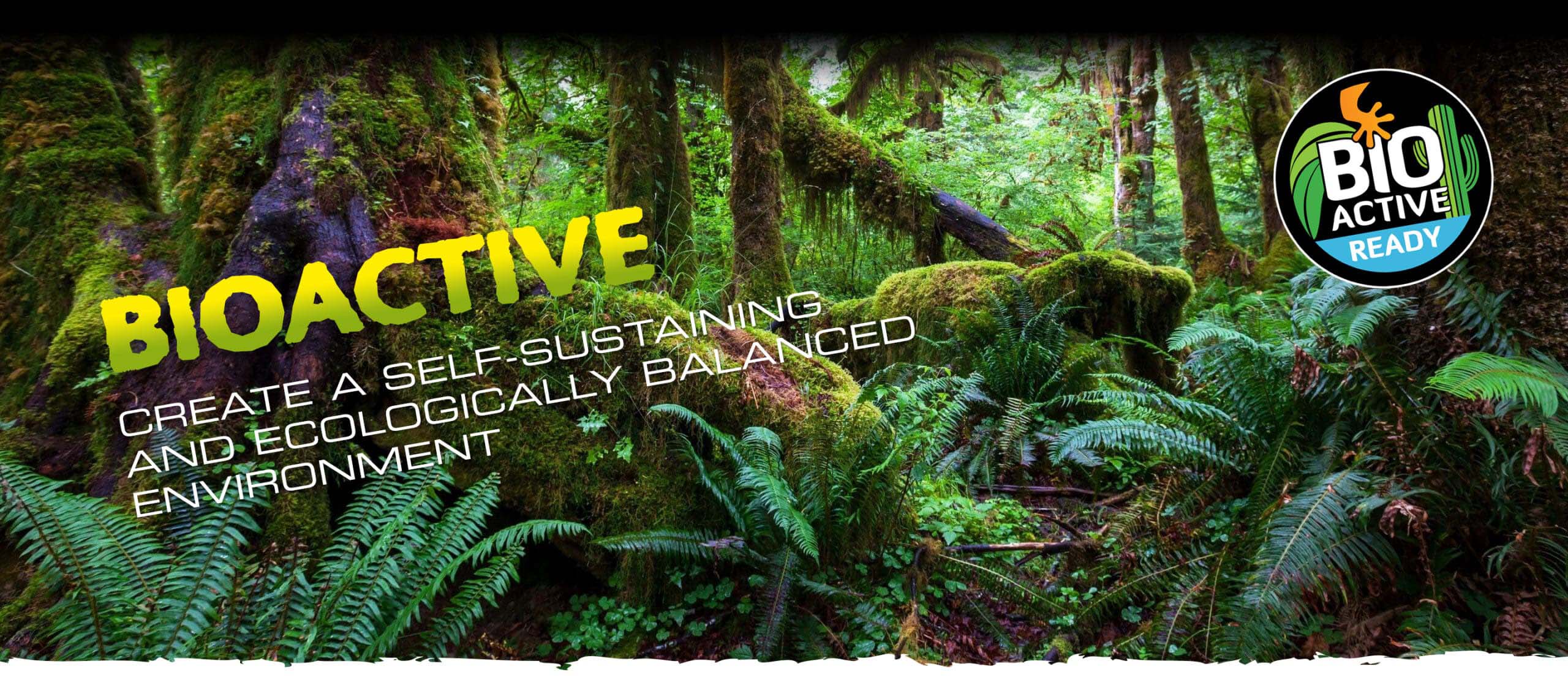
The Clean-up Crew
Thomas Merckx
Creating a thriving bioactive ecosystem within a terrarium is of great significance. Essential to this process is the “clean-up crew”—a specialized assembly of small organisms dedicated to breaking down organic matter, managing waste, and controlling debris within these enclosed environments. These organisms enrich the terrarium, nurturing the soil and, by extension, supporting the plants and other inhabitants.
- Springtails: A vital part of the clean-up crew, these minute, wingless insects excel as decomposers. They actively feed on decaying plant matter, fungi, and bacteria, as a natural force against waste accumulation. They even keep the terrarium free from pesky mites and fungus gnats, ensuring that undesirable species are controlled. Notable springtails in our ecosystem include Tropical White Springtail (Collembola sp) and Folsomia candida.
- Isopods: Our beloved crustaceans flourish in damp surroundings. They aerate the substrate through burrowing, consuming decaying plants in the process. These actions are vital to nutrient cycling within the terrarium. To ensure the well-being of species like Powder Orange Isopods (Porcellionides pruinosus) and Dwarf White Isopods (Trichorhina tomentosa), we advise having leaf litter or softwood readily available.
- Earthworms: In grander terrariums, earthworms offer valuable support in waste breakdown and soil enhancement. Their burrowing improves aeration and drainage, fostering healthier plant growth.
- Beetles: For desert terrariums, certain beetle species can serve the cleaning role effectively, although they might be tempting snacks for reptiles. Blue death-feigning beetles (Asbolus verrucosus) and Dermestid beetles (Dermestes maculatus) are examples.
- Millipedes: As detritivores, millipedes play a unique part in breaking down fallen leaves and organic debris. While beneficial in moderation, regulating their numbers is vital to prevent any disruption in the ecosystem’s balance.
- Other Microorganisms: Bacteria, fungi, and other unseen organisms work hand-in-hand with the more visible members of the clean-up crew, simplifying organic matter into accessible nutrients.
The efforts of the clean-up crew are central to maintaining a balanced and self-regulating ecosystem in an Exo Terra bioactive terrarium. By managing waste and outcompeting harmful organisms, they preserve cleanliness, allowing for a flourishing and healthy environment. By fostering a symbiotic relationship between various organisms and offering natural solutions to potential challenges, a balanced clean-up crew epitomizes the philosophy of Exo Terra to create as natural an environment as possible for captive reptiles and amphibians. They embody our pursuit to “Make your reptiles feel at home.”
Thomas Merckx
“The efforts of the clean-up crew are central to maintaining a balanced and self-regulating ecosystem in an Exo Terra bioactive terrarium.”
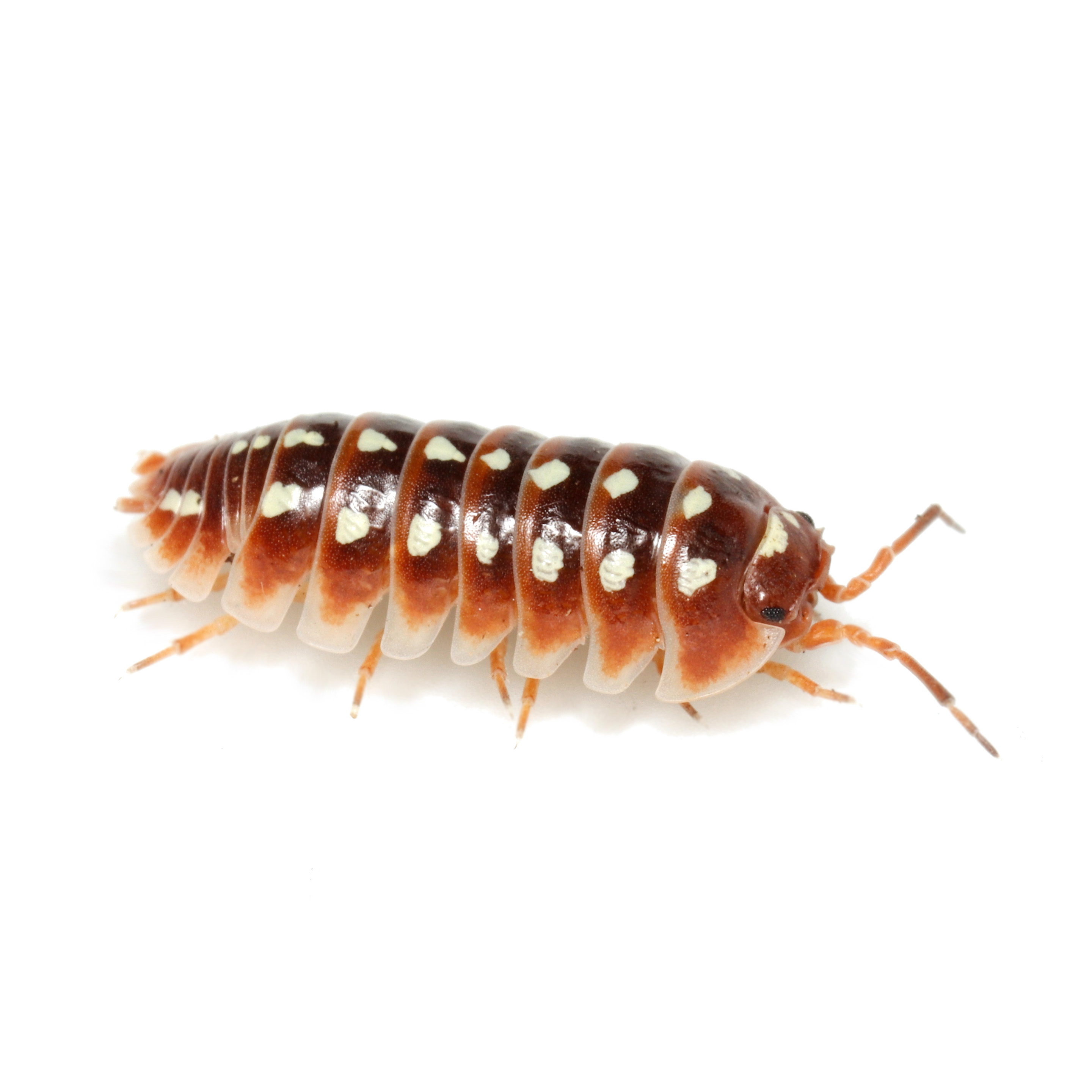

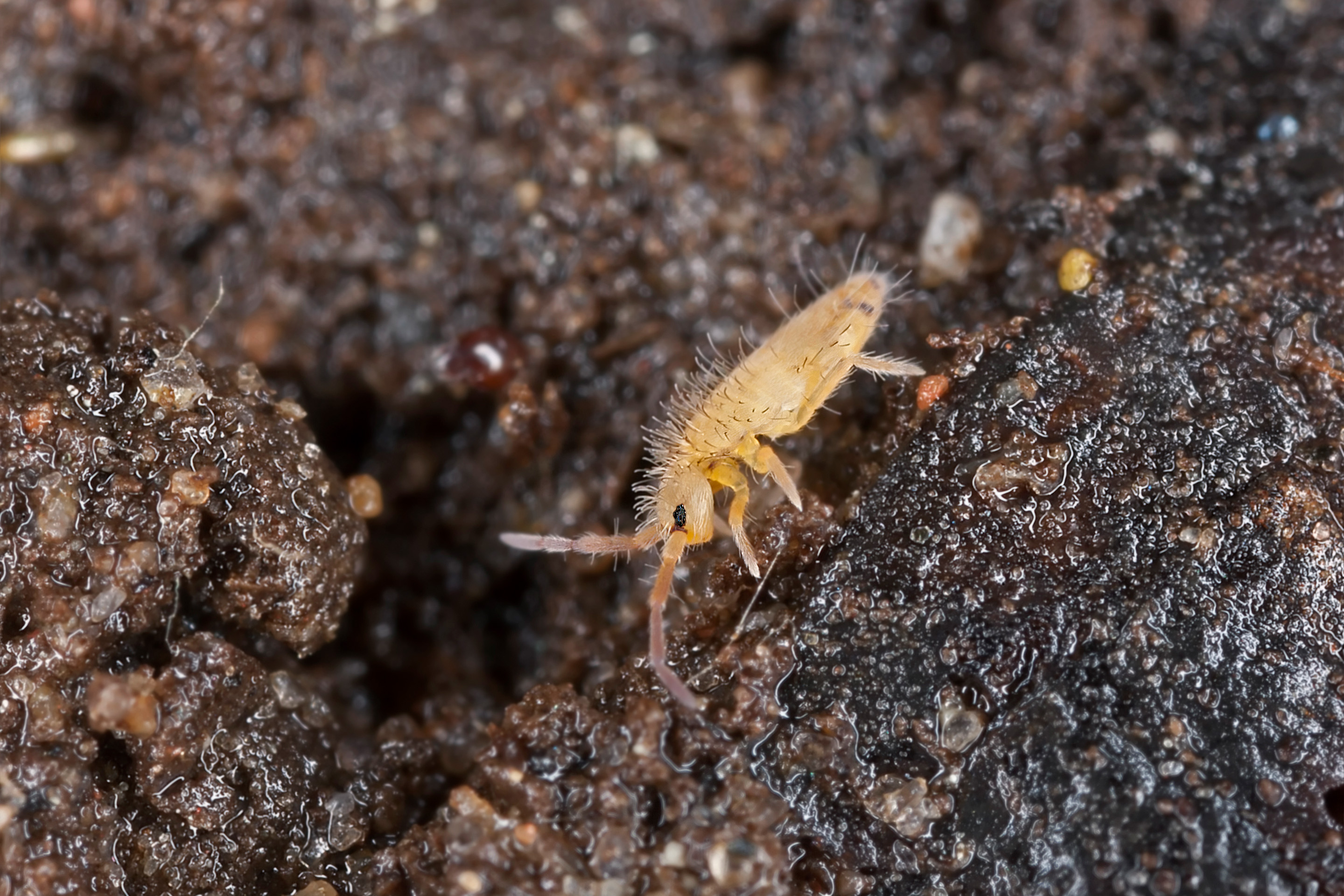

Collembola sp. consume organic matter like decaying plant material
Springtails
Collembola sp., like Folsomia candida, are species of springtails, tiny insects that play an essential role in bioactive terrariums. They are precious components in creating a thriving and self-sustaining environment within the terrarium.
Collembola species are widely appreciated for their decomposing abilities. These small, wingless insects consume organic matter like decaying plant material, fungi, and bacteria. As they feed on this matter, they aid in breaking it down, thereby preventing the buildup of waste within the terrarium. One of their most critical roles is mould control, as they effectively compete with moulds for nutrients and space, often winning this battle and limiting mould growth. By doing so, Collembola sp. contributes to a cleaner, healthier habitat for plants, reptiles, and amphibians.
- Folsomia candida: This springtail species is a key player in the decomposition process within the terrarium. Folsomia candida is highly efficient at breaking down organic materials, including fungi and bacteria. They are a biological control agent against unwanted microorganisms and contribute to nutrient cycling. Converting complex organic matter into simpler compounds releases nutrients back into the soil, providing vital plant sustenance. Folsomia candida, too, plays a part in mould control and helps maintain the overall balance of the ecosystem.
- Pseudosinella alba: Also called Prospectors springtails, are vital members of the bioactive terrarium ecosystem. These tiny, wingless insects feed on decaying matter, fungi, and bacteria, breaking down organic waste into simpler compounds. Doing so, they help prevent waste accumulation and contribute to nutrient cycling, enriching the soil for plants. They also assist in controlling undesirable species by outcompeting them for food. Their presence in a terrarium significantly enhances the ecosystem’s overall health, balance, and sustainability.
- Coecobrya tenebricosa: Small and agile insects colloquially referred to as “Pink” or “White Tropical Springtails”. They were previously categorized under the name Sinella Curviseta. These springtails are known to flourish in both humid and semi-arid environments. These springtails are superb feeders for petite reptiles and amphibians. Their invaluable role in preserving equilibrium within a habitat, suppressing unwanted species, and fostering a natural and self-renewing ecosystem makes them integral to bioactive terrariums. An essential aspect of maintaining these insects is ensuring ventilation without direct airflow. By upholding these specific conditions and consistently overseeing their population, Coecobrya tenebricosa can be kept successfully as an efficacious element of your terrarium’s clean-up crew.
Collembola species are instrumental in creating and maintaining a naturalistic environment within a bioactive terrarium. They are natural recyclers that transform waste into a usable form, contributing to the soil’s health and the well-being of other inhabitants. In addition, they exemplify life’s intricate and interconnected nature within a terrarium.
Isopods
Isopods, including Powder Orange Isopods (Porcellionides pruinosus) and Dwarf White Isopods (Trichorhina tomentosa), are fascinating and indispensable components in a bioactive terrarium. At Exo Terra, we recognize their essential roles in contributing to a vibrant, balanced, and functional ecosystem.
- Powder Orange Isopods (Porcellionides pruinosus): These vividly coloured isopods are more than just aesthetically appealing; they are effective decomposers. Thriving in moist environments, they consume decaying plant matter, waste, and other organic debris. As they burrow, they aerate the substrate, enhancing its quality and supporting healthy plant growth. This species also assists in nutrient cycling, converting waste into beneficial nutrients that plants can absorb.
- Dwarf White Isopods (Trichorhina tomentosa): Smaller but equally valuable, Dwarf White Isopods perform many of the same functions as their Powder Orange counterparts. They actively break down organic matter, including fallen leaves and waste, preventing the buildup of harmful toxins within the terrarium. Their presence helps maintain proper soil moisture and structure, further contributing to an environment where plants and animals can flourish.
- Other Species of Isopods: Various other isopod species can be used in a bioactive terrarium, each bringing unique benefits. Some may be more suited for tropical environments, while others might thrive in a desert or woodland setting. They all participate in the breakdown of organic material and nutrient cycling, but specific preferences for humidity, temperature, and diet may vary between species.
In general, isopods offer several significant advantages to the bioactive terrarium:
- Decomposition: By consuming decaying matter, they break down complex organic materials, recycling nutrients back into the soil.
- Soil Aeration: Their burrowing behaviour helps in soil aeration, improving drainage and creating a conducive environment for plant roots.
- Mould and Pest Control: Isopods can also control undesirable moulds and pests by outcompeting them for resources.
- Nutrient Cycling: They play a critical role in nutrient cycling, converting waste materials into usable forms for plants and helping them grow strong and healthy.
- Natural Appearance: With their intriguing appearance and natural behaviours, they add to the visual appeal of the terrarium.
Isopods in a bioactive setup are a step towards replicating nature’s complexity. They embody our commitment to fostering authentic and thriving habitats where reptiles and amphibians feel at home. Using isopods in our terrariums, we encourage hobbyists to engage with the remarkable interconnectedness of life, appreciating the subtle yet essential roles each organism plays within the ecosystem.
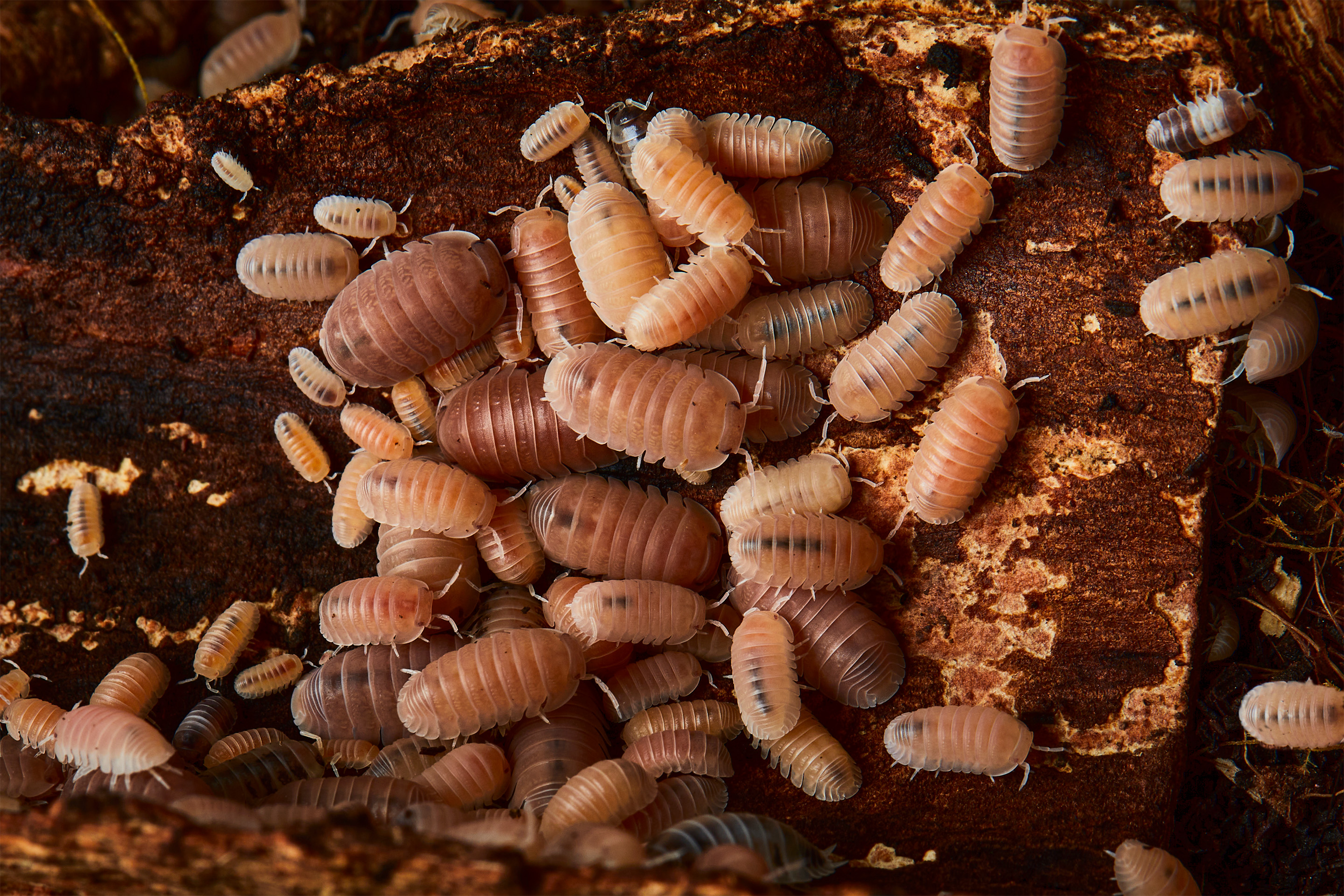

The Little Sea Isopods (Cubaris murina "Papaya") are effective decomposers
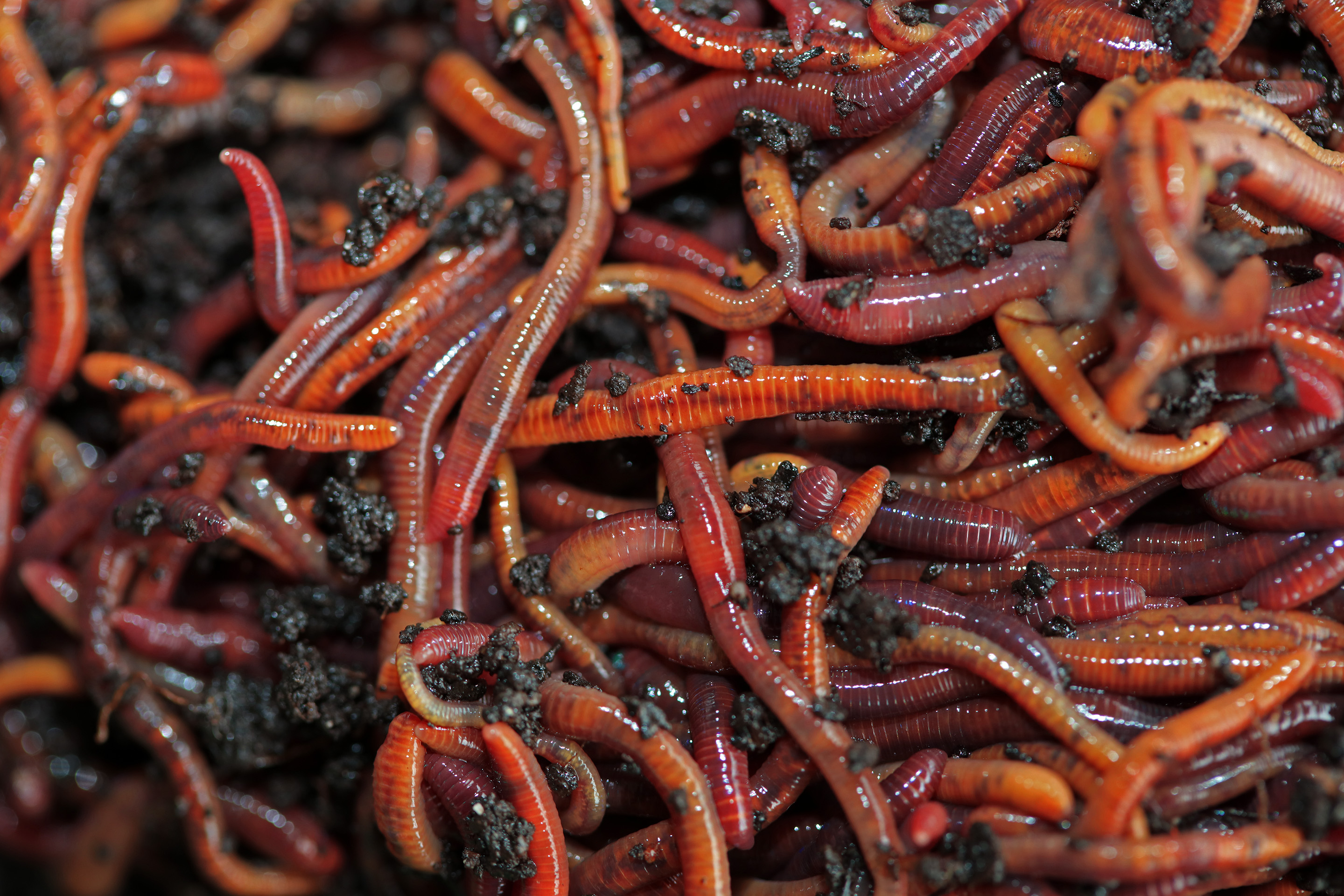

Earthworms (Eisenia hortensis)
Earthworms
Earthworms play an integral role in the bioactive terrarium, bringing several essential benefits that contribute to a balanced and thriving ecosystem. Some of the roles that different species of earthworms can have in a bioactive terrarium.
- Lumbricus terrestris (Common Earthworm): Commonly found in garden soil, Lumbricus terrestris is a species often used in bioactive terrariums. They are voracious eaters, consuming decaying organic matter, and their constant burrowing helps to aerate the soil, improving drainage and soil structure. They break down complex organic materials into simpler compounds that plants can utilize.
- Eisenia fetida (Red Wiggler): This species is widely known for its use in vermicomposting and can also be included in bioactive terrariums. Red Wigglers are particularly efficient at breaking down organic waste into nutrient-rich castings, providing a vital nutrient source for plants. Their smaller size and adaptability make them suitable for various terrarium settings.
- Eisenia hortensis (European Nightcrawler): A larger species than the Red Wiggler, European Nightcrawlers are beneficial in breaking down more substantial pieces of organic debris. They help maintain the substrate’s quality, and their burrowing activity creates channels that enhance water and air penetration, supporting plant roots.
- Amynthas spp. (Asian Earthworms): Some Asian earthworm species are used in bioactive terrariums and are known for their unique role in breaking down more fibrous plant matter. They also contribute to soil aeration and nutrient cycling.
General Benefits of Earthworms in a Bioactive Terrarium:
- Soil Aeration: Their burrowing activity improves soil aeration, leading to healthier root development for plants and better drainage.
- Decomposition: Earthworms consume organic matter like fallen leaves and animal waste, breaking them down into simpler compounds that plants can absorb.
- Nutrient Cycling: Earthworms’ castings (fecal matter) are rich in nutrients, helping to recycle and redistribute essential minerals and nutrients within the terrarium soil.
- Natural Behavior Encouragement: Earthworms’ presence may stimulate natural foraging and digging behaviours in certain reptiles and amphibians.
- Visual Aesthetic: Though often hidden, the occasional appearance of earthworms adds to the terrarium’s natural authenticity.
By incorporating earthworms into a bioactive setup, you approach a more balanced, stable, and self-sustaining environment where every organism has its role, just as in the wild.
Beetles
Beetles, including Blue death-feigning beetles (Asbolus verrucosus) and Dermestid beetles (Dermestes maculatus), are valuable contributors to the ecosystem within a bioactive terrarium. Each type of beetle plays a unique role, and at Exo Terra, we recognize the importance of these insects in maintaining balance and diversity within the enclosure. Here’s a closer look at the mentioned beetles and others that can be beneficial:
- Blue Death-Feigning Beetles (Asbolus verrucosus): These fascinating desert beetles have earned their name by faking death as a defence mechanism. In a bioactive terrarium, they can help break down organic matter, especially in arid or desert setups. They consume decaying plant material and dead insects, converting them into plant nutrients. Their unique appearance and behaviour can also add visual interest to the enclosure.
- Dermestid Beetles (Dermestes maculatus): Dermestid beetles are often used in taxidermy for cleaning skeletons, and in a bioactive terrarium, their voracious appetite for organic material makes them excellent decomposers. They efficiently break down animal carcasses, skin, and other tough materials, recycling them back into the ecosystem. This process helps prevent the accumulation of waste and foul odours.
- Darkling Beetles (Various species): Darkling beetles, including mealworm beetles, can benefit arid and tropical setups. They consume decaying plant matter and dead insects, helping to recycle nutrients. Some species are also edible for reptiles, providing an additional food source within the terrarium.
- Burying Beetles (Nicrophorus spp.): Known for burying small vertebrate carcasses and using them as a food source for their larvae, burying beetles can be an intriguing addition to a terrarium. By burying and consuming deceased animals, they help control odours and potential pest issues.
- Greenhouse Rove Beetles (Dalotia coriaria): The Rove Beetle (Dalotia coriaria) dwells in soil and feasts on fungus gnats and thrips. Alongside Hypoapsis miles, these beetles may offer protection against root aphids. They’re not only insectivores but also detritivores, consuming organic matter to assist in plant decomposition and nutrient cycling. However, caution is required; if food sources are insufficient, these beetles might prey on other clean-up crew members, potentially disrupting the balance within the terrarium. Their dual role as both predator and decomposer makes them a complex but potentially beneficial addition to a controlled environment.
General Contributions of Beetles in a Bioactive Terrarium:
- Decomposition: Beetles break down a wide range of organic matter, from dead plant material to animal remains, facilitating nutrient recycling.
- Pest Control: Some predatory beetles help maintain a balance by preying on potential pest species.
- Visual and Behavioral Enrichment: The appearance and natural behaviours of beetles add complexity and authenticity to the terrarium environment.
- Compatibility with Different Environments: Various species are adaptable to different terrarium setups, whether tropical or desert.
Beetles reflect the intricate interactions that make up a natural ecosystem. By understanding and utilizing these insects, we can create a terrarium that more closely mirrors the complexity and balance of the wild, offering an enriching habitat for plants, reptiles, and amphibians alike. The presence of beetles adds an additional layer of intrigue and fascination to the bioactive terrarium experience.
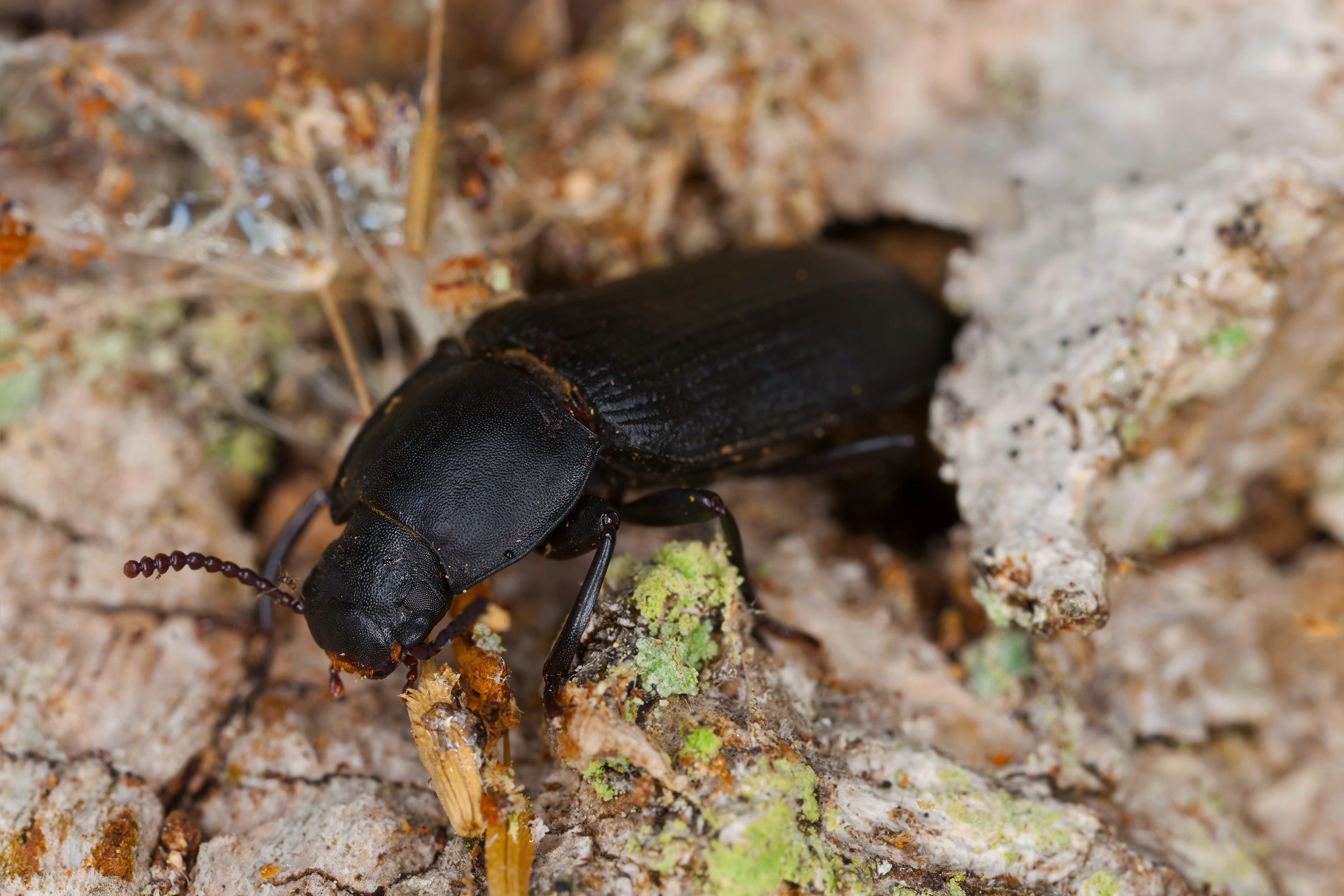

Tenebrio molitor, in its larval stage it is the common Mealworm
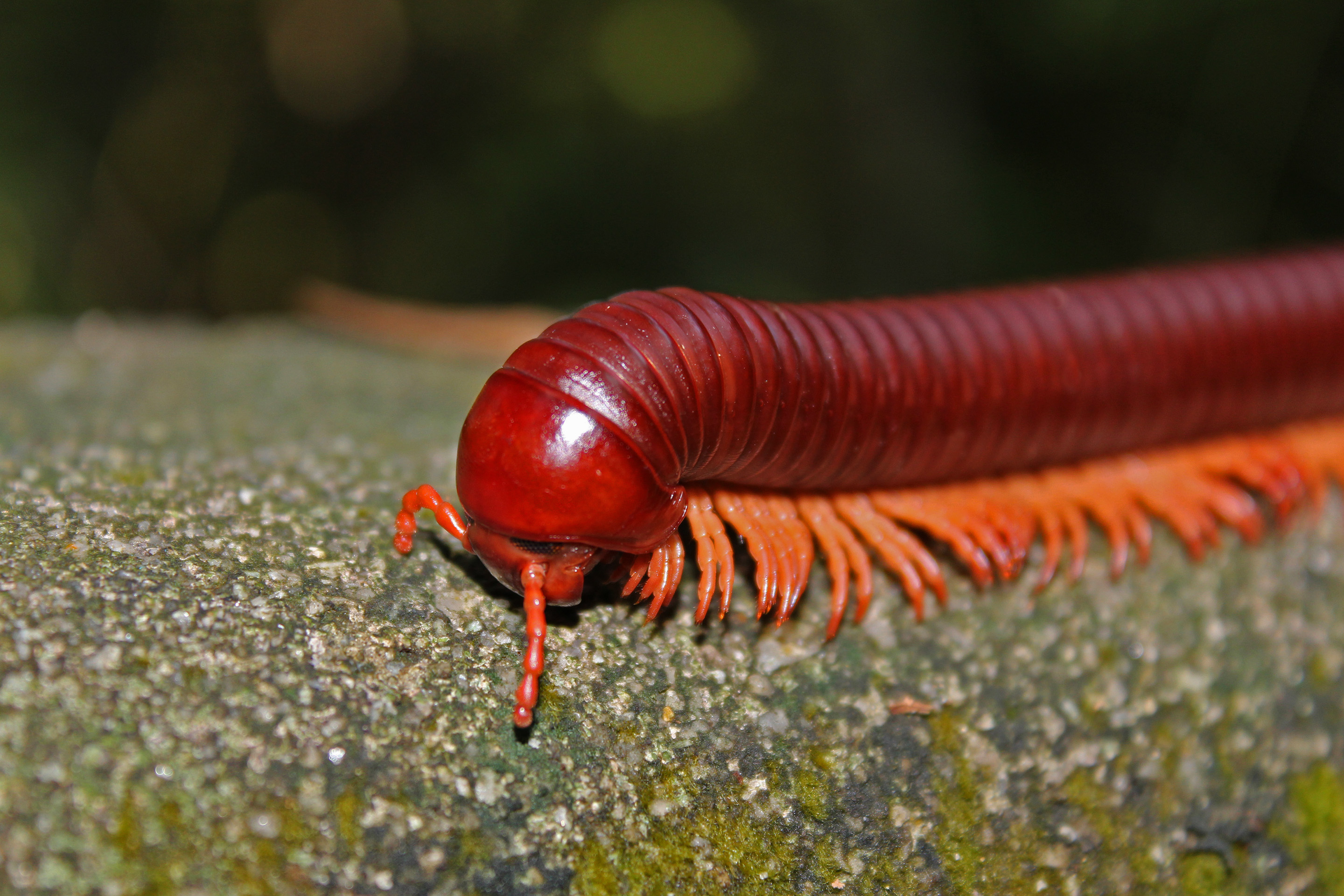

Scarlet Millepede (Trigoniulus corallinus) from Asia
Millipedes
Millipedes are fascinating invertebrates that can make an essential contribution to bioactive terrariums. As detritivores, they play a key role in breaking down organic matter, such as dead leaves, wood, and plant debris, turning it into nutrients for the soil. Here’s an overview of several species of millipedes that can be used in the bioactive terrarium:
- African Giant Millipedes (Archispirostreptus gigas): These impressive creatures are one of the largest millipede species in the world, reaching up to 11 inches in length. Their primary diet consists of decaying wood and plant matter. Their size allows them to break down larger pieces of organic material and are best suited for larger terrariums with tropical setups.
- Bumblebee Millipedes (Anadenobolus monilicornis): These smaller, colourful millipedes are popular for tropical terrariums. They actively consume decaying leaves, wood, and fruit, helping to recycle nutrients. Their distinctive black and yellow banding adds visual interest to the terrarium.
- Florida Ivory Millipedes (Chicobolus spinigerus): Adapted to subtropical climates, Florida Ivory Millipedes effectively break down softer decaying matter. Their pleasant ivory coloration contrasts the green plants and other darker terrarium inhabitants.
- Scarlet Millipedes (Trigoniulus corallinus): Scarlet Millipedes are a striking addition to a tropical terrarium with a bright red hue. They thrive on a diet of decaying plant material and help maintain the soil’s nutrient levels.
- European Black Millipedes (Tachypodoiulus niger): These millipedes are well-suited for temperate terrarium setups. They are excellent at breaking down various organic matter, including rotting wood, leaves, and fruit.
- Pill Millipedes (Glomeris marginata): Unlike other millipedes, Pill Millipedes can roll into a ball as a defence mechanism. They are beneficial in breaking down softer organic material and add uniqueness to the terrarium’s ecosystem.
The Role of Millipedes in a Bioactive Terrarium:
- Decomposition: Millipedes actively break down decaying organic material, turning it into accessible plant nutrients.
- Soil Aeration: Millipedes help aerate the soil as they burrow, improving its texture and water-retention properties.
- Visual Appeal: Many millipedes have unique and colourful appearances, adding to the visual aesthetics of the terrarium.
- Nutrient Recycling: Their fecal matter, known as frass, is nutrient-rich and contributes to soil enrichment.
However, it’s essential to note that while millipedes are generally beneficial, an unchecked population can lead to overconsumption of live plant matter, negatively impacting the terrarium’s balance. Regular monitoring and control of their numbers are vital for maintaining harmony within the system.
Millipedes facilitate a sustainable and balanced ecosystem within a bioactive terrarium and provide educational insight into the complexity of nature’s recycling process. By choosing the appropriate species for the terrarium environment, hobbyists can ensure that these incredible creatures contribute positively to the health and vitality of their enclosed habitat.
Bacteria
In a bioactive terrarium, the clean-up crew isn’t just comprised of visible organisms like insects and millipedes. Bacteria also play a crucial role in maintaining the ecosystem’s health. While they may be invisible to the naked eye, their contribution is no less vital. Here are some examples of these microscopic allies and what they do in the bioactive terrarium:
- Nitrosomonas and Nitrobacter Species: These are nitrifying bacteria responsible for converting ammonia into nitrites (Nitrosomonas) and then into nitrates (Nitrobacter). They are part of the nitrogen cycle, which is essential for converting waste products into usable forms for plants.
- Rhizobium Species: These bacteria form symbiotic relationships with legume roots, helping to fix nitrogen from the atmosphere into a usable form for plants. They enrich the soil and help support plant growth within the terrarium.
- Decomposing Bacteria: Various bacteria break down dead organic matter, releasing nutrients back into the soil. They are the primary agents in the decomposition process, working with fungi and other organisms.


Bacteria cultures
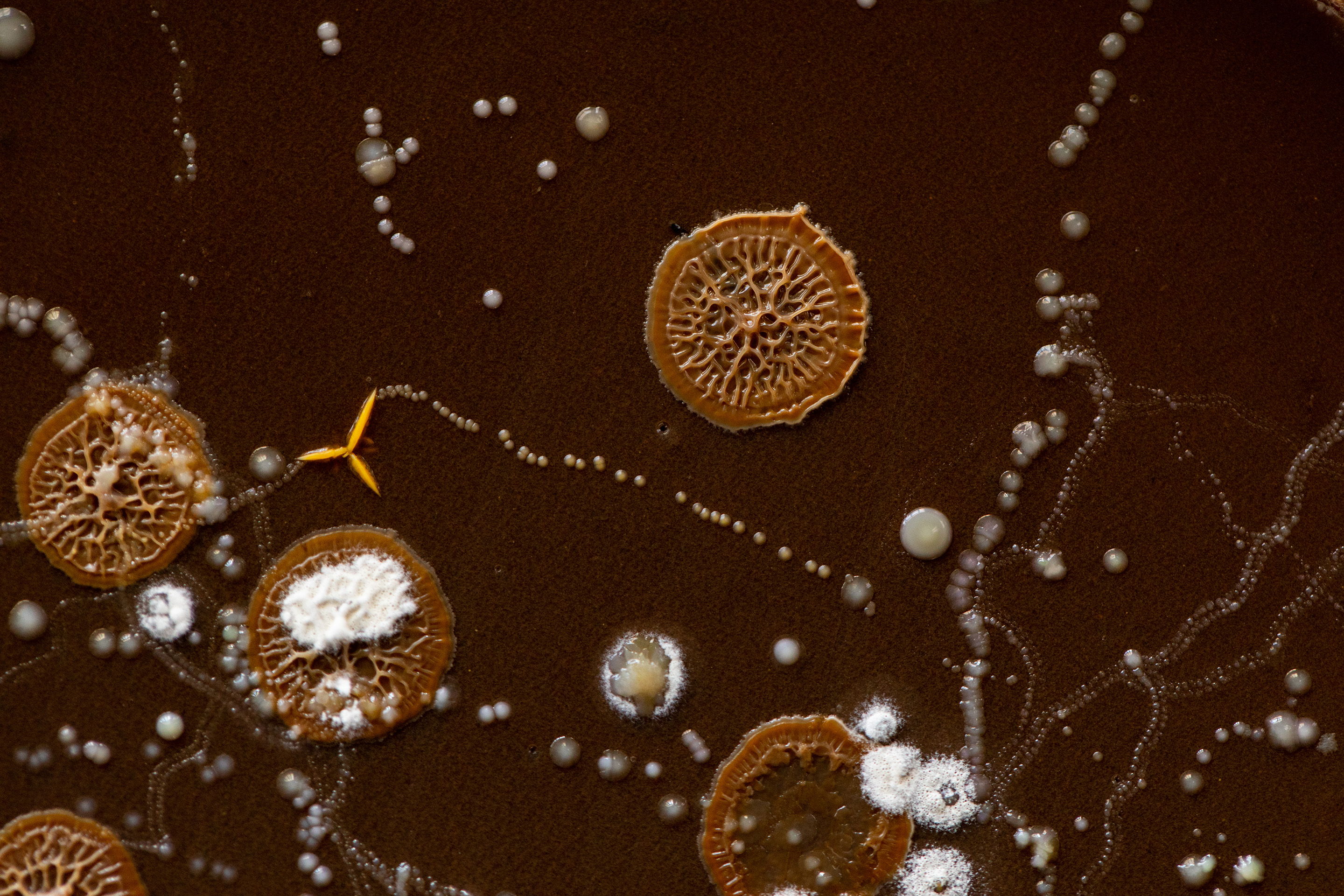

Actinomyces culture
Other Microorganisms
In a bioactive terrarium, the clean-up crew isn’t just comprised of visible organisms like insects and millipedes. Bacteria, fungi, and other microorganisms also play a crucial role in maintaining the ecosystem’s health. While they may be invisible to the naked eye, their contribution is no less vital. Here are some examples of these microscopic allies and what they do in the bioactive terrarium:
- Mycorrhizal Fungi: These fungi form symbiotic relationships with plant roots, aiding in nutrient absorption, particularly phosphorus. They enhance plant growth, health, and resilience within the terrarium environment.
- Saprophytic Fungi: Saprophytic fungi feed on dead organic matter, aiding in decomposition. They break down complex organic compounds into simpler substances that plants and other organisms can use.
- Yeasts: Yeasts are single-celled fungi that contribute to the fermentation and breakdown of sugars and other organic compounds. They may play a part in digesting waste products and contributing to nutrient cycling.
- Protozoa: Protozoa are single-celled organisms that feed on bacteria, helping control bacterial populations. They contribute to nutrient cycling by ingesting bacteria and releasing excess nutrients for plant use.
- Algae: Algae, especially in aquatic terrariums, can play a role in oxygen production and nutrient absorption. They might be involved in providing food for some microfauna and controlling unwanted substances like nitrates.
- Actinomycetes: These microorganisms are somewhere between bacteria and fungi. They help decompose organic matter, specifically breaking down tough substances like cellulose and lignin in plant materials.
Understanding the role of these microorganisms can lead to more effective and balanced terrarium management. Encouraging a healthy microbial community is key to a thriving ecosystem, and it requires careful planning, appropriate substrate choices, and ongoing monitoring. Though they may be unseen, the microbial clean-up crew is essential for maintaining the vitality and harmony of the bioactive terrarium.
Conclusion
The Interconnected Role of organisms and microorganisms in a bioactive terrarium represents a complex and delicately balanced ecosystem where each component contributes to the overall health and stability of the environment. Within this microcosm, springtails, isopods, earthworms, beetles, millipedes, bacteria, fungi, and other microscopic beings work together in harmony.
Springtails and isopods break down organic material and prevent waste accumulation, while earthworms enhance soil structure and aeration. Beetles act as cleaners, especially in desert habitats, and millipedes as detritivores, transforming organic matter into accessible nutrients. Bacteria and fungi play vital roles in the decomposition process and nutrient cycling, transforming waste into life-sustaining elements.
These organisms, from the smallest bacteria to the larger insects and worms, function in a symbiotic relationship, with their actions and existence intertwined. Together, they create a self-sustaining, dynamic environment that promotes growth, decay, transformation, and renewal.
In summary, the bioactive terrarium’s success depends on understanding and nurturing these interconnected relationships, recognizing that each organism, no matter how small, contributes to the overall balance and vitality of this miniature ecosystem. Their combined efforts create a cleaner, healthier environment where plants and other inhabitants can thrive, painting a vivid picture of life’s complexity even in a confined space.

Bioactive Topics
Frogs & Co
Frogs are almost everywhere on this planet. From the tropics to subarctic regionsThere are about 7,000 species – with the greatest diversity in the tropical rainforests. Recreating parts of these tropical rainforests is an art! The Exo Terra...
How to set up a bioactive terrarium
Setting up a bioactive terrarium can be a rewarding and sustainable way to keep certain types of reptiles, amphibians or invertebrates. The concept of a bioactive terrarium is to create a self-sustaining ecosystem where the animals live alongside various microorganisms that help maintain a natural balance.
Microhabitat Types For Frogs
While the stunning colors and studying the amazing behavior of frogs have always been the motive to keep these amazing animals in a terrarium, with the recent trend towards more natural, bioactive tropical terrariums, we see a steep increase...
Role of the substrate
In a bioactive terrarium, the substrate plays a crucial role in supporting the overall health and functioning of the ecosystem. The term "substrate" refers to the material or layer on the floor of the terrarium where plants, microorganisms, and invertebrates reside.
Stay up on all things exo terra.
"*" indicates required fields

